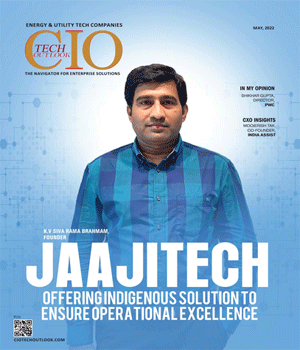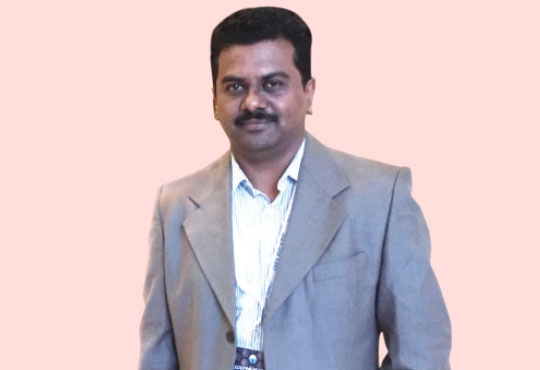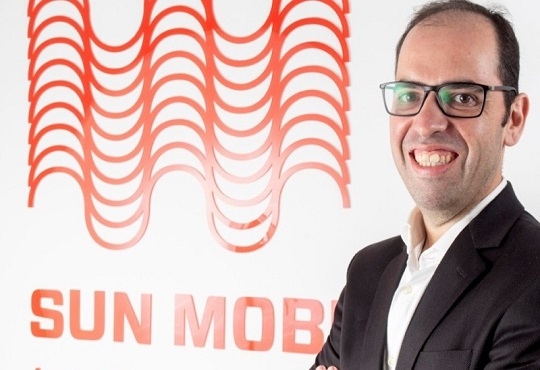
From Power to Lifestyle - The Future of Solar Bright and Exciting
Rahul Gupta, Director, Rays Power Experts Pvt Ltd | Friday, 16 June 2017, 12:15 IST
 Government is pushing renewables aggressively. India is on the verge of becoming Solar Super Power. The solar revolution is picking pace, offering a solution to bridge power demand and supply. In next 5-10 years, solar market will transform itself into a lifestyle product as the costs plummet and service providers learn to consumerize.
Government is pushing renewables aggressively. India is on the verge of becoming Solar Super Power. The solar revolution is picking pace, offering a solution to bridge power demand and supply. In next 5-10 years, solar market will transform itself into a lifestyle product as the costs plummet and service providers learn to consumerize.
Various solar products will hit the market in applications we can't imagine today (think of solar roadways, solar tiles) and solar technology will be integrated into daily lives (cars, boats, trucks, refrigeration, mobile phones, windows, roofing, siding, solar trees, etc)). Innovation will push the efficiency and yet miniaturize the systems, allowing for more commercial use cases.
Colorful, Transparent & Custom Shaped Panels
For residential solar applications, the key innovation, other than price declines for installed systems, will be the consumerization of this product category. Rather than selling large, clunky modules, consumers will have the option to install cool-looking systems with color choices and installation techniques that optimize the aesthetics of these systems. Solar will move from a geeky, edgy product category to a more mass-market product where having a solar system is seen as a smart and cool investment. The marketing and sales messaging will improve to better connect with the hearts and minds of the mass-market customer and this will be critical to gaining traction in this largely untapped market segment.
AI, IoT, Robotics and Nanotechnology is Sure to Change the Equations
Solar Plant Development will not be limited to just erecting solar panels. It will come all equipped with sophisticated features like IoT (Internet of Things), Artificial Intelligence, Robotics & Nanotechnology.
With raising internet penetration in the country and enabled network access in remote areas, the solar industry will see a rise of connected solar power management software and systems. These systems will ease out most of the manual work done for managing & maintaining the solar parks. Remote monitoring data will be used to draw complex useful inferences. Drones will perform surveillance and robots will sprinkle and clean the panels. Inverters will talk to AJBs and Solar Panels will talk to computer screens using IoT. Nanotechnology will continue to reduce the thickness and increase the efficiency. Scientists are even exploring the possibility of extracting energy from a broader spectrum of light.
A microgrid is a discrete energy system consisting of distributed energy sources (including demand management, storage, and generation) and loads capable of operating in parallel with, or independently from, the main power grid. This is true energy independence. The years of 1990-2020 saw a rise in urbanization across India with millions of new residential colonies coming into existence all across India. The year 2020-2050 will see rise of smart, energy independent colonies.
The World Will See the Birth of ‘Service’ Based Solar Industry
Owing to larger than ever awareness, accessibility to affordable quality equipments and mature infrastructure around the country, solar will emerge as a common to have utility. This will give rise to thousands of micro-economy jobs in the solar servicing industry. Just like there exists a service industry for our mobiles phones, cars & washing machines, there will be a service industry for various solar related services like plant cleaning, repairing, equipment replacements etc. This will be an unprecedented rise because it will be a totally new skill based industry in India and will contribute in strengthening the economy.
Higher Efficiency, Lower Costs
As technology gets better, the efficiency will continue to increase in panels and the prices will continue to drop. Solar efficiency of modern age panels is anywhere between 15-21 percent depending on many external factors like operating temperature, array arrangements etc. Solar panels 5 years down the line will have efficiency in the range of 25-32 percent or more. This will bring solar into grid parity vis-a-vis coal, nuclear and hydro projects. Solar will continue to be a very effective source of stable energy at peak times for cooling demand.
Lighter, Flexible, More Durable Panels Will Rule
Apart from conventional panels, we will witness varied types of solar panels, from flexible paper like capabilities to shapes and sizes suiting our unique requirements. Even advertising hoardings will generate their own power. We are approaching an inflection point in the solar market and what we know as "fact" today will be laughable in the years ahead. As the manufacturers in this market conform to the demands of the mass-market, we will see an epic acceleration in unit sales and an adoption rate that transforms the energy market for decades to come. Exciting times for sure!
CIO Viewpoint
Digital Disruption - To Drive Next Wave Of...
By Jatinder Bansal, AVP & Head IT, ReNew Power Ventures Ltd
IT Services Outsourcing - Challenges to Conquer
By Umasankar Pandurangan, AGM- IT, HPCL- Mittal Energy Limited
Hadoop Uncovering Hidden Patterns to Make...
By Priyadarsanie Ramasubramanian, Head - Engineering and Technology, Tesco
CXO Insights
What is SF6 and why is it important?
By Guilherme Susteras, IEEE Senior Member
Unlocking Growth Via Digitalization Of The...
By Shikhar Gupta, Director, PwC
From Power to Lifestyle - The Future of Solar...




.jpg)
.jpg)




